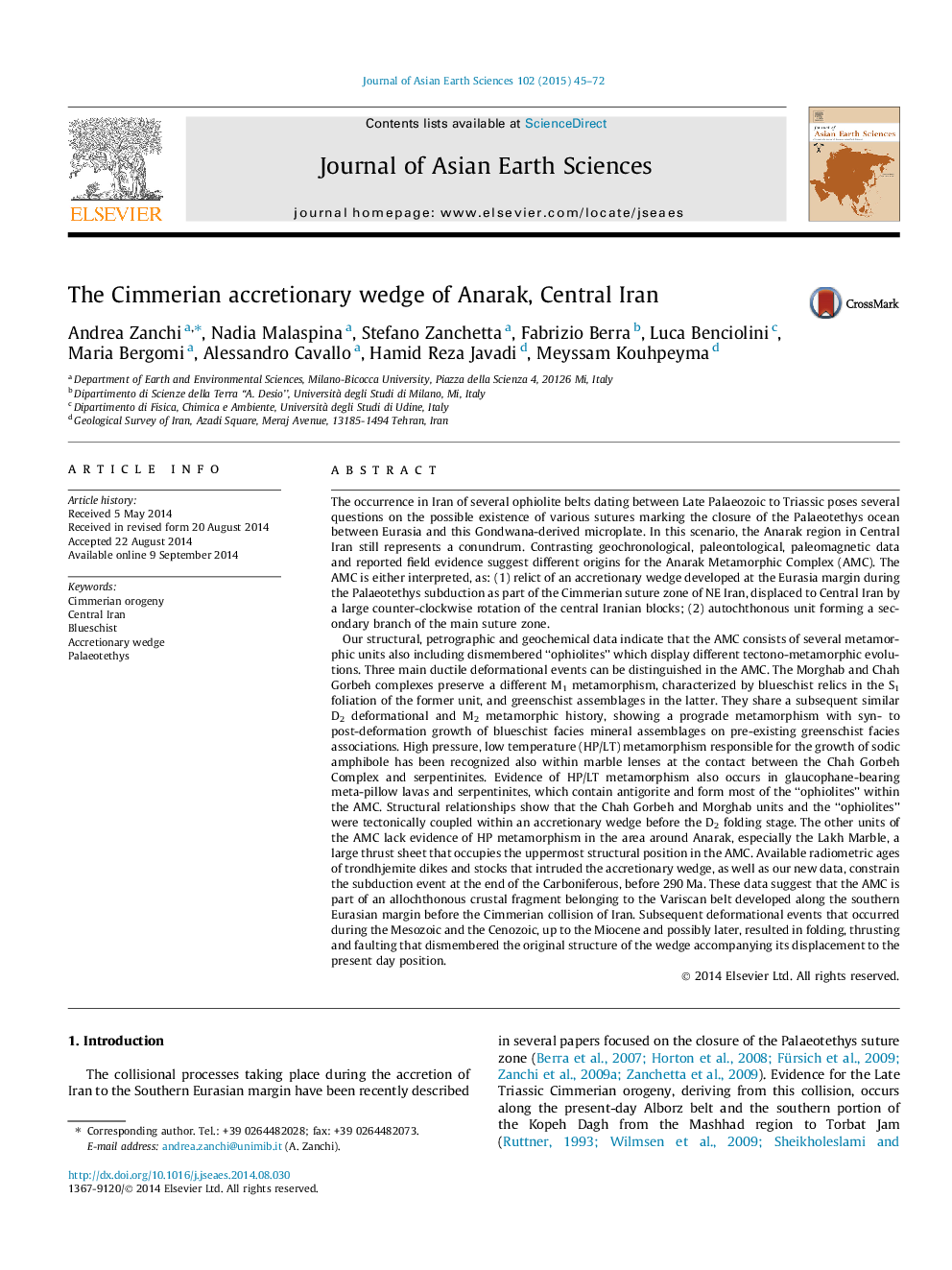| کد مقاله | کد نشریه | سال انتشار | مقاله انگلیسی | نسخه تمام متن |
|---|---|---|---|---|
| 4730410 | 1640367 | 2015 | 28 صفحه PDF | دانلود رایگان |

• The Anarak Metamorphic Complex is a fragment of a Carboniferous accretionary wedge.
• The wedge is related to the subduction of the Palaeotethys below Eurasia.
• U–Pb zircon ages from trondhjemites constrain HP–LT conditions to the Carboniferous.
The occurrence in Iran of several ophiolite belts dating between Late Palaeozoic to Triassic poses several questions on the possible existence of various sutures marking the closure of the Palaeotethys ocean between Eurasia and this Gondwana-derived microplate. In this scenario, the Anarak region in Central Iran still represents a conundrum. Contrasting geochronological, paleontological, paleomagnetic data and reported field evidence suggest different origins for the Anarak Metamorphic Complex (AMC). The AMC is either interpreted, as: (1) relict of an accretionary wedge developed at the Eurasia margin during the Palaeotethys subduction as part of the Cimmerian suture zone of NE Iran, displaced to Central Iran by a large counter-clockwise rotation of the central Iranian blocks; (2) autochthonous unit forming a secondary branch of the main suture zone.Our structural, petrographic and geochemical data indicate that the AMC consists of several metamorphic units also including dismembered “ophiolites” which display different tectono-metamorphic evolutions. Three main ductile deformational events can be distinguished in the AMC. The Morghab and Chah Gorbeh complexes preserve a different M1 metamorphism, characterized by blueschist relics in the S1 foliation of the former unit, and greenschist assemblages in the latter. They share a subsequent similar D2 deformational and M2 metamorphic history, showing a prograde metamorphism with syn- to post-deformation growth of blueschist facies mineral assemblages on pre-existing greenschist facies associations. High pressure, low temperature (HP/LT) metamorphism responsible for the growth of sodic amphibole has been recognized also within marble lenses at the contact between the Chah Gorbeh Complex and serpentinites. Evidence of HP/LT metamorphism also occurs in glaucophane-bearing meta-pillow lavas and serpentinites, which contain antigorite and form most of the “ophiolites” within the AMC. Structural relationships show that the Chah Gorbeh and Morghab units and the “ophiolites” were tectonically coupled within an accretionary wedge before the D2 folding stage. The other units of the AMC lack evidence of HP metamorphism in the area around Anarak, especially the Lakh Marble, a large thrust sheet that occupies the uppermost structural position in the AMC. Available radiometric ages of trondhjemite dikes and stocks that intruded the accretionary wedge, as well as our new data, constrain the subduction event at the end of the Carboniferous, before 290 Ma. These data suggest that the AMC is part of an allochthonous crustal fragment belonging to the Variscan belt developed along the southern Eurasian margin before the Cimmerian collision of Iran. Subsequent deformational events that occurred during the Mesozoic and the Cenozoic, up to the Miocene and possibly later, resulted in folding, thrusting and faulting that dismembered the original structure of the wedge accompanying its displacement to the present day position.
Journal: Journal of Asian Earth Sciences - Volume 102, 15 April 2015, Pages 45–72